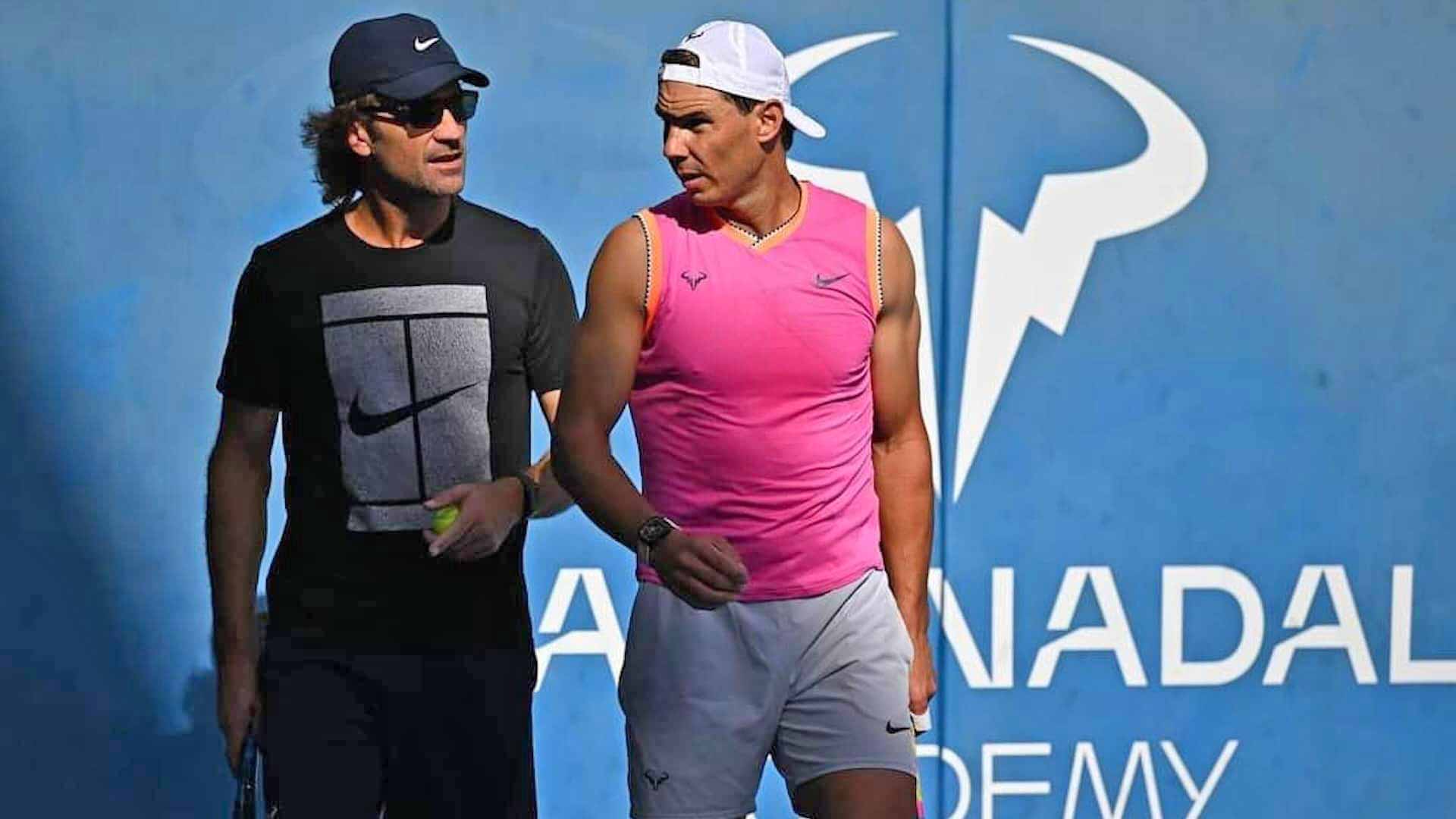

After a year off the courts, Rafael Nadal will be back in competition in late December at the Brisbane International presented by Evie. After an operation on his psoas muscle and a lingering hip issue, the 22-time Grand Slam champion set out on the long road to recovery with his sights set on a 2024 return, and the opportunity to bring an end to his legendary career while battling it out on a tennis court.
Having recently returned from Kuwait, where they practised for a few days with Arthur Fils, and before heading for Australia, Carlos Moyà, the Spaniard’s coach, sat down with ATPTour.com for an exclusive discussion about the most difficult time in the Mallorcan’s career.
Could you break down what has happened in the past few months, from Nadal’s decision to have an operation to the latest training sessions, with a mind to return to competition in Brisbane?
It’s what comes with an operation that requires complete rest. He had a more complicated operation than was first expected. Once they opened him up and saw what was there, it was more delicate than they had first thought. It’s not that he didn’t have tests and scans... but it seems that they didn’t have a good idea of the problem and the recovery period was longer than expected.
It's also true that if he hadn’t had the operation, it would’ve been even more difficult for him to recover. He always knew he wanted to come back and that he wanted to say his goodbye on court.
After the operation... it was a month and a half of practically not seeing him, because he went on holiday. He was doing rehab as much as he could, given that he was on the boat in Greece. Then, at the end of August, we started to train, but very lightly. We would do two days a week, twenty minutes. It was a very slow progression. Sometimes we would take a step back, then go again... We were always very careful.
The start was very tough, of course. There were times when it looked difficult because he wasn’t getting better. We always had peace of mind because of the constant contact with the doctor, with tests, to reassure ourselves that the rate of progress was completely normal.
We gradually increased the load and the intensity, always with a very careful plan that we followed. Sometimes we would have to take a step back, rest a little, slow down. But it’s the entire process that comes with an injury of this severity, and you’re at the point of your career when you’re no longer 20 years old.
Little by little, we were able to progress, the issues were gradually solved and now he’s practically ready to go to Australia and give it a go.

Photo Credit: Corinne Dubreuil
Was there any point of the entire process when you thought he wouldn’t come back?
Yes. When you go through a process like this operation... at the end of the day, going under the knife is really a last resort, and I’m talking from experience, to try and make a comeback and retire on court. Aware of those risks, he gave it a go because it was the only option for him if he wanted to come back.
And when we started, and we’d been playing for a month and a half, or two, and we realised that progress was very slow... you don’t know if it’s slower than expectations because it’s the first time we’d been in a situation like that. But you do have your doubts, and in the player’s head there are also doubts: Will his body respond? Will it be able to take the loads? A lot of questions arise. It has not been a bed of roses, far from it. It’s been a winding, tortuous road, with many curves.
Besides the tennis work, what was your psychological role? I imagine there would have been a lot of days of talking, encouragement, being there to listen.
Both myself and the rest of the team. When I talk about myself, I talk about the whole team, aware that we are with a 37-year-old human being who has his life, his family, his interests, and his feelings. We’ve tried to support him, doing what we thought was right at each moment, looking out for his wellbeing and confidence.
Sometimes we had to press him a little, sometimes we had to take a step back. Depending on how we saw the situation from one day to the next, and above all his state of mind and motivation, sometimes one thing was required, while on other days it was the other.
In that regard, I think that he has a very understanding team. We’ve known him for many years and I think that aspect was very well taken care of.
It was a question of controlling the balance between pushing and letting go. We were aware that we had to be careful. It’s always easy to work with him because of the respect he has for all of us. I think that’s very important, but of course there were some very tough and difficult days.
Were they your most difficult times with him?
Without any doubt. There have been other difficult situations, but now you can tell the batteries are running low. A sportsman has an expiry date, and he is getting closer to it every day. You’re never aware of when that time is, very rarely. You just keep trying. And I think in that regard we’ve all had our doubts that it could come in Australia, he more so than anyone.
I had them for a certain part of the process, during certain stages. I had the feeling that it could be the end, that he’d have no chance to play again. It was the most difficult time I’ve had with him.